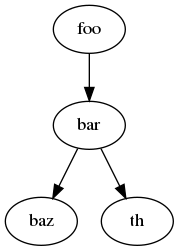Documenting Ceph¶
User documentation¶
The documentation on docs.ceph.com is generated from the restructuredText
sources in /doc/ in the Ceph git repository.
Please make sure that your changes are written in a way that is intended
for end users of the software, unless you are making additions in
/doc/dev/, which is the section for developers.
All pull requests that modify user-facing functionality must include corresponding updates to documentation: see Submitting Patches for more detail.
Check your .rst syntax is working as expected by using the “View”
button in the github user interface when looking at a diff on
an .rst file, or build the docs locally using the admin/build-doc
script.
For more information about the Ceph documentation, see Documenting Ceph.
Code Documentation¶
C and C++ can be documented with Doxygen, using the subset of Doxygen markup supported by Breathe.
The general format for function documentation is:
/**
* Short description
*
* Detailed description when necessary
*
* preconditons, postconditions, warnings, bugs or other notes
*
* parameter reference
* return value (if non-void)
*/
This should be in the header where the function is declared, and functions should be grouped into logical categories. The librados C API provides a complete example. It is pulled into Sphinx by librados.rst, which is rendered at /rados/api/librados.
Drawing diagrams¶
Graphviz¶
You can use Graphviz, as explained in the Graphviz extension documentation.

Most of the time, you’ll want to put the actual DOT source in a separate file, like this:
.. graphviz:: myfile.dot
Ditaa¶
You can use Ditaa:

Blockdiag¶
If a use arises, we can integrate Blockdiag. It is a Graphviz-style declarative language for drawing things, and includes:
block diagrams: boxes and arrows (automatic layout, as opposed to Ditaa)
sequence diagrams: timelines and messages between them
activity diagrams: subsystems and activities in them
network diagrams: hosts, LANs, IP addresses etc (with Cisco icons if wanted)
Inkscape¶
You can use Inkscape to generate scalable vector graphics. https://inkscape.org/en/ for restructedText documents.
If you generate diagrams with Inkscape, you should commit both the Scalable Vector Graphics (SVG) file and export a Portable Network Graphic (PNG) file. Reference the PNG file.
By committing the SVG file, others will be able to update the SVG diagrams using Inkscape.
HTML5 will support SVG inline.
